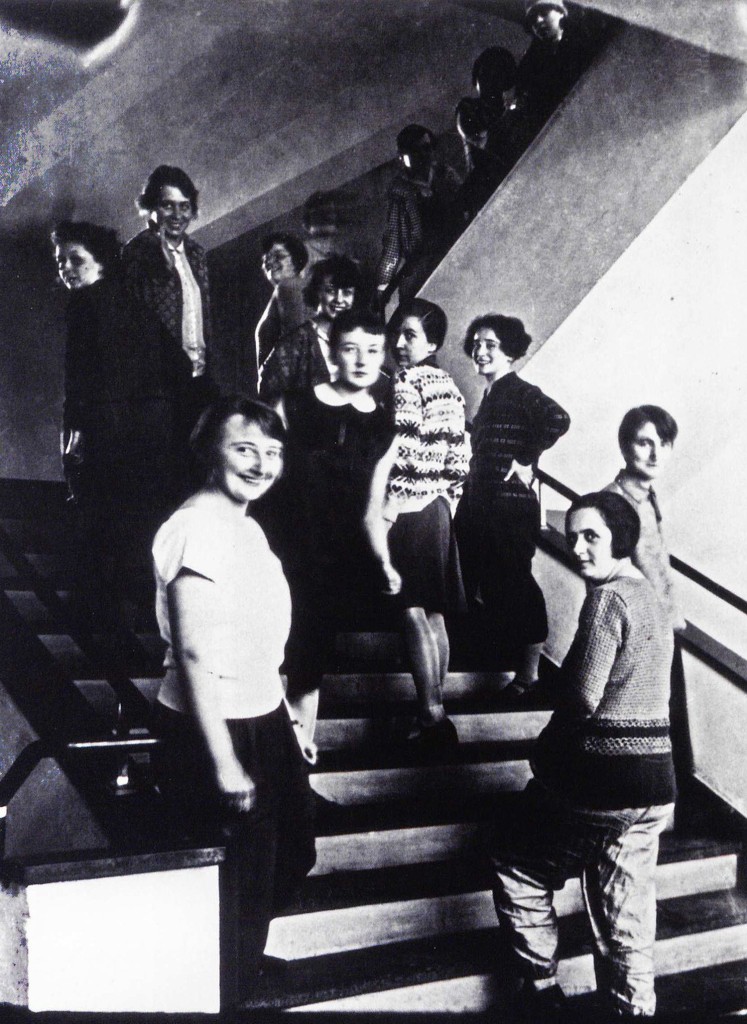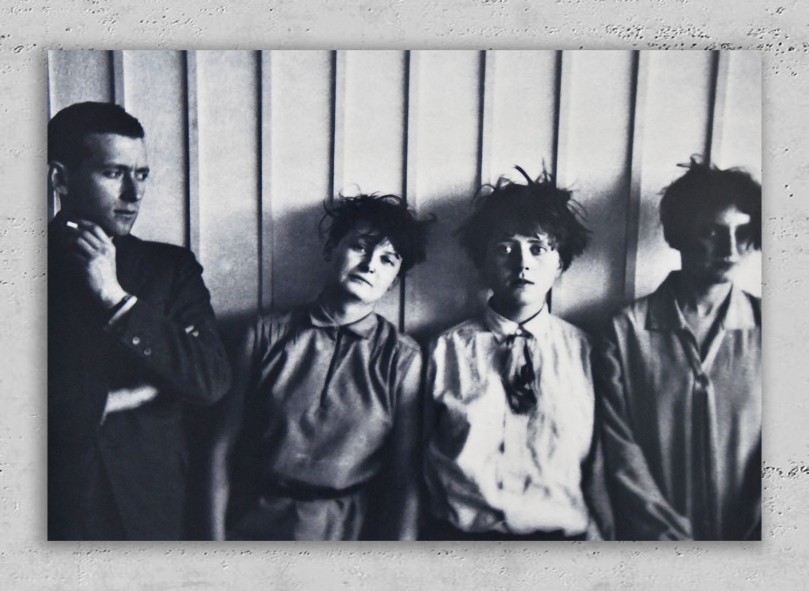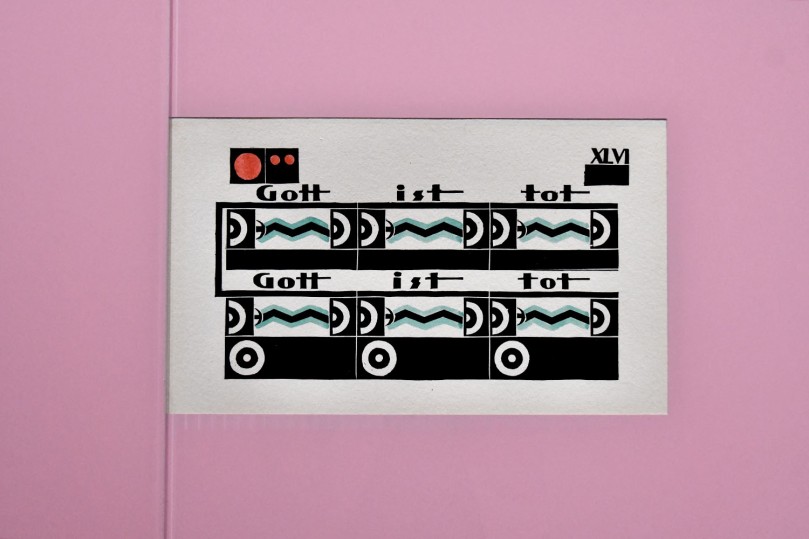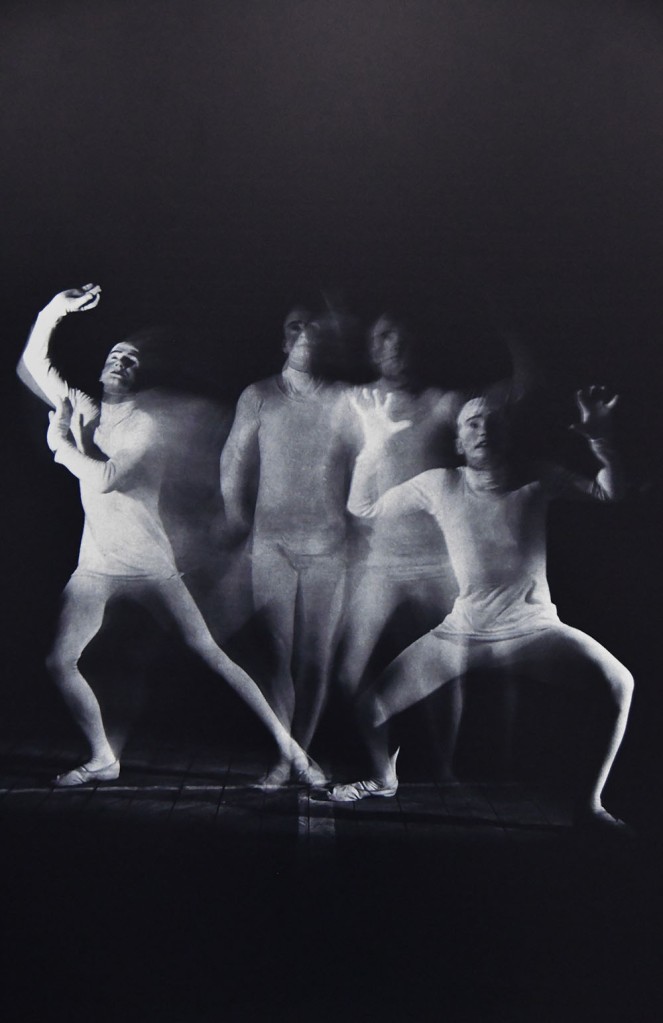I have to admit, I wasn’t quite in my best shape that day when we went to the new Bauhaus Museum in the center of Weimar. In the end I didn’t find any inspiration for new thoughts on Bauhaus except of a question: How is it possible to create an excellent exposition of something as difficult to explain as Design, Bauhaus and a complex history to an obviously very interested and curious but mostly amateurish audience?
I am far from being an expert for the Bauhaus but I saw the big question marks on the faces of my co-visitors (2 scientists, 1 future physicist). And the question I asked myself several times was: Which stories should be told? What could be really interesting insights for Bauhaus-“Beginners” besides the obvious objects and visuals? What could change their way of perceiving everyday live?
My central concepts would be the following (depicted below):
- The exceptional movement and why I would have fought the Bauhaus too, if I would have been the Nazis
- The design context and how everything changed with Bauhaus
- The “form follows function” paradigm everyone uses in a weird way
Other expositions I would be really interested in:
- Walter Gropius – visionary, director and egomaniac dickhead
- Women at the loom – Why women made Bauhaus financially fit for survival and why they weren’t able to go for architecture
- Fascist Design vs. Bauhaus Design – a juxtaposition in pictures
- If you don’t behave well you’ll end up at the Bauhaus! – The reception of Bauhaus Students among Weimar bourgeoisie in the 20s
- Bauhaus artists in Buchenwald and other concentration camps – the end of a dream of a new world
1. The exceptional movement and why I would have fought the Bauhaus too, if I had been the Nazis
Look at the following pictures. Those are the pictures of and the oeuvres from some young artistic people in the 1920s an 30s. Look at the art. This is made by people with open minds denying everything conservative, everything conventional. In their classes they learned to think everything from scratch. Itten, Klee and Kandinsky taught them that nothing is set and everything can – or better SHOULD – be reinvented.
This spirit of the New in the heads of young people determined to change the world—in a time in which the winds of change blew hard like a storm, politically, technologically and socially—was a dangerous mixture. And the students of the Bauhaus had the means to communicate with words, visually and with art, objects and buildings. Their modern ideas and every piece of art and design represented the New, the unconventional the endless openness and freedom of spirit. They were so free that the Bourgeoisie of Weimar threatened their kids with the sentence: If you don’t behave well you’ll end up at the Bauhaus!
Look at the faces of those young and crazy people. They did not only want to change the world, they were the change. The Nazis knew very well, why they had to stop them.

2. The design context and how everything changed with the Bauhaus
Sometimes historic revolution is only graspable when compared to the direct context of the time. To understand the impact of the Bauhaus Design and the huge change that was made and still influences our daily life, I like to tell this story of contrasts:
Today, we know many big and impressive buildings. Corporate buildings, shopping malls, churches. Our streets are neat and proper and people wear colored clothes. When the big churches, like for example St. Peter’s Basilica in Rome were built (starting 1506) everything around those buildings was dirty, grey and small. When people entered the the huge and vastly decorated church and the light fell through the colored windows onto the tiled floors, people coming in from the dirty and hopeless streets immediately were able to feel the Holy Spirit coming over them. Today when entering St. Peter’s we maybe have a feeling that this is very big and very golden but it is not overwhelming anymore. Our context has changed.
Today we are so used to Bauhaus aesthetics that we don’t even see them anymore. But in the 1920s the design of everyday things was rather different. Let’s have a look at the context.
Design of everyday things before Bauhaus. Fashion, tableware and interior around 1900-1920:
Design of everyday things at Bauhaus:

Short hair was quite fashionable at the time but trousers and a not so female attitude?
Bauhaus Design wasn’t likable at first sight. Normal people frequently thought it to be an abomination. Gropius’ Haus am Horn was blamed to be built for martians. Not everyone but quite a few people hated this straightforward design without frills. We know the same effect today: Simple people like pretentious and frivolous design (Best example is Ceaușescu and Palace Of The Parliament in Bucharest). And as well: The more a society is democratic, the more the general design is inclined to minimalism. Please google Russian interior design vs. Nordic interior design and look at the pictures.
There is so much explosiveness in this last two statements. I could write books about it, if somebody would pay me :-). Just keep in mind: Nothing in the design world was like before after Bauhaus. Every object, every building around us is influenced by it. Today, thinking design without Bauhaus is simply not possible.
3. The “form follows function” paradigm everyone uses in a weird way
I already wrote about that in an article about Dessau Bauhaus.
What is left from the visit of the Bauhaus Museum in Weimar?
I liked the building with its endless stairs. It reminded me a little of the Jewish Museum in Berlin just without the groundbreaking aspects.
I saw an elder couple (their accent told me, they were from the outskirts of Weimar) at the end of the exposition, looking at a movie in which people talked about different forms of cohabitation and the social consequences of it. They seemed to be released, because for the first time they were able to relate to something from the exposition. This is, of course, my interpretation. But I still ask myself: Who is the target group of this exposition? Which questions ought to be answered?
In my opinion this exposition fails Bauhaus in so many ways. Because at the end what is left from the Bauhaus is far more than a collection of things categorized in design genres. It’s the easy way out for a museum. And a concept, which is far more antiquated than its subject.
Very good articles and movies:
- Must-see movie about the women at Bauhaus (German): https://www.mdr.de/tv/programm/sendung874072.html
- Letters from a student to his mother (German):
https://www.faz.net/aktuell/stil/mode-design/briefe-aus-dem-leben-eines-bauhaus-studenten-15869246.html - The conflict between Gropius & Meyer, Design für eine Elite vs. für Alle (German)
https://www.youtube.com/watch?v=C0YttE6ZXLk - Bauhaus Basics (German)
https://www.saarbruecker-zeitung.de/nachrichten/kultur/vor-100-jahren-entstand-mit-dem-bauhaus-die-bedeutendste-architekturbewegung-der-avantgarde_aid-37086571 - Bauhaus Documentation from 1969
https://www.youtube.com/watch?v=vN4wf0mqoxw - Die Verbindungen der Bauhaus-Akteure zum Nationalsozialismus
https://www.rosalux.de/fileadmin/rls_uploads/pdfs/Themen/GK_Geschichte/Texte/rosengarten.pdf





























🙂 My wife and I were in the Weimar Bauhaus Museum a week ago today! We had been in Dessau two days earlier and found the Dessau Museum exhibits more engaging than those in Weimar. It may have been Bauhaus overload after the School, the Master’s Houses and the new museum, but the selection and arrangements of exhibits in Weimar seemed very limiting somehow.
LikeLiked by 1 person
The Museum was especially build for this exposition and the city is right to take the 100 years as an opportunity to do so, but for the size of the project (in means of time and money) it was really a conceptual deception for me. To much of the things, not enough of the ideas.
LikeLiked by 1 person
[…] The Bauhaus Museum In Weimar: A Collection Of Things Or A Movement That Changed The World? […]
LikeLiked by 1 person
Thanks for sharing, Katherine!
LikeLike
[…] The Bauhaus Museum In Weimar: A Collection Of Things Or A Movement That Changed The World? […]
LikeLiked by 1 person